
Packaging is more than just a way to protect your product. It communicates vital information to customers and regulators. Food expiration dates, lot numbers, and allergen warnings must be clear and permanent to ensure food safety and meet regulatory standards.
At the same time, brands need to stand out on crowded shelves with clean, professional packaged food. Striking this balance isn’t easy, especially when traditional label printing methods can smudge, fade, or slow down production.
Many manufacturers choose hot stamp printing as a simple, cost-effective solution. This technology allows food companies to apply durable, high-quality compliance information and branded graphics directly onto packaging materials, without compromising speed, shelf appeal, or efficiency.
Balancing Compliance, Branding, and Shelf Appeal
Packaging is often the first impression a consumer has of your product. If key details like food expiration dates or allergen warnings are unclear or inconsistent, it can undermine trust and even result in regulatory violations or recalls. On the other hand, if branding isn’t crisp and attractive, your product can lose shelf appeal to competitors.
You need a way to print compliance and brand elements seamlessly, without bottlenecking production or sacrificing quality. Hot stamp printers have become a preferred solution because they deliver durable, legible, and professional printing designed for the demands of high-volume packaged food.
Get Smudge-Proof Results With a Hot Stamp Printer
Hot stamp printers use a combination of heat and pressure to transfer foil or pigment directly onto a packaging surface. The result is a permanent, smudge-proof impression that resists wear during transport, storage, and handling.
These systems are highly versatile, working with a range of materials like labels, pouches, cartons, films, and even flexible plastics.

They’re commonly used to apply:
- Expiration and “best by” dates
- Lot or batch codes
- Barcodes and tracking numbers
- Brand logos or specialty designs
Because the process doesn’t rely on ink, there’s no drying time, reducing production slowdowns and helping manufacturers keep lines moving smoothly.
Meeting Compliance Requirements With Confidence
In the food industry, compliance is essential. Regulatory agencies like the FDA require clear, legible, and permanent markings for details like allergen declarations, lot codes, and food expiration dates. Failing to meet these requirements can lead to costly recalls, damaged brand reputation, or worse—consumer health risks.
Hot stamp printers help ensure compliance by producing consistent, indelible prints that stand up to moisture, handling, and temperature fluctuations. Their precision reduces the risk of errors, giving manufacturers confidence that every packaged food leaving their facility meets food safety standards.
Keep Your Branding Strong and Consistent on Every Packaged Food
Packaging is also a key part of brand identity. Smudged, faded, or inconsistent logos can make even premium products look unprofessional. Hot stamp printing supports strong visual presentation by delivering crisp, clean logos and graphics, even in challenging production environments.
This is particularly valuable for small-batch and specialty food producers, where premium presentation can command higher prices, as well as for high-volume manufacturers who need consistency across thousands of units per day. The flexibility of hot stamp printers ensures brands can present a polished, professional image on their packaged food.
Why Hot Stamp Printing Outperforms Other Methods
Not all printing solutions can keep up. Ink-based systems can smudge or require extra drying time, while some digital printers can’t withstand the speed or environmental challenges of high-volume production.
However, hot stamp printers are built to thrive in these demanding settings, offering both reliability and speed without sacrificing print quality.

Key advantages include:
- Performance in Demanding Environments: Hot stamp printers are designed to handle the realities of food production, like fast-moving lines, wet or humid conditions, and diverse packaging substrates such as films, cartons, and pouches.
- Low Maintenance: With rugged components and fewer moving parts, these printers experience less wear and tear, minimizing downtime even in around-the-clock operations.
- Cost-Effectiveness: Whether you’re producing small-batch specialty foods or running large-scale operations, hot stamp printers deliver a low cost per print compared to many alternative technologies.
- Efficiency: With no ink or curing time, prints are ready instantly, reducing bottlenecks and ensuring smooth, continuous operation.
These benefits make hot stamp printers a future-proof investment for food manufacturers. They protect your operation from unnecessary downtime and quality issues while keeping your packaged food compliant and market-ready, even as your production volumes grow or your packaging formats evolve.
How to Find the Best Printer for Your Products and Line
Not all hot stamp printers are built the same, and choosing the wrong one can create bottlenecks or limit your ability to scale. Before making an investment, it’s important to evaluate how your packaging line operates now and how it might evolve in the future.
The right system will meet your immediate needs but also integrate seamlessly as your product offerings or production volumes grow.
Key factors to consider include:
- Substrate Type: Will your printer need to work with films, pouches, labels, cartons, or a mix of materials? Some models handle a wider range of substrates than others.
- Production Speed: Can the printer match your current throughput while giving you room to grow? Slower systems can quickly become a bottleneck as demand increases.
- Message Size and Complexity: Are you simply printing batch codes and food expiration dates, or do you need to include detailed logos and multi-line text?
- Automation Level: Should the printer operate as a standalone unit for manual or semi-automated runs, or integrate into conveyors, labelers, or a fully modular system?
Taking these details into account upfront can help you avoid costly retrofits and ensure your printer is a long-term asset rather than a short-term fix.
Partnering with a labeling equipment provider who understands the food industry is critical. They can assess your line, recommend the most suitable models, and ensure smooth integration so you get the performance you need without disrupting your operation.
One Solution for Safer, Smarter Food Packaging
For food manufacturers, packaging needs to protect, inform, and sell. Hot stamp printers make that possible by delivering clear, compliant coding alongside sharp, professional branding on your packaged food, all without slowing down production.
Looking to simplify your food labeling process? Download our “Industry Guide to Evaluating Labeling Fresh Food Containers” to explore how hot stamp printing can help your brand stay compliant, consistent, and competitive.
.webp?width=200&height=114&name=2x-Packleader-logo-large%20(1).webp)

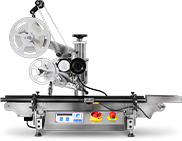


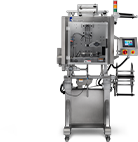
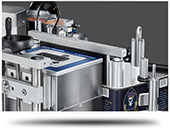
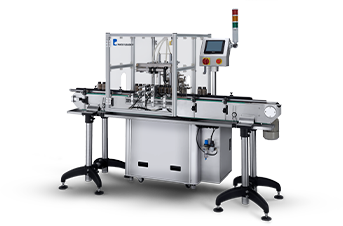

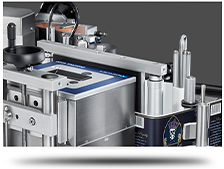





.webp?width=360&name=2x-color-logo%20(1).webp)